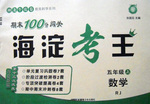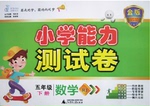题目内容
When an ant dies, other ants take it out of the nest, often within an hour after its death. This behavior interests scientists and they wonder how ants know for sure—and so soon—that another ant is dead.
One scientist recently came up with a way to explain this ant behaviour. Dong-Hwan Choe is a biologist, a scientist who studies animals and plants. He found that ants have a chemical on the outside of their bodies that signals to other ants, “I'm dead—take me away” when it is dead.
But there's a question to answer: As we know, if an ant is dead, it stops moving. But when an ant is sleeping or knocked unconscious, it is also not moving. However, other ants don't move the living ant out of the nest. How do they know this ant is not dead? Choe found that ants have another chemical on their bodies, which tells nearby ants something like, “Wait—I'm not dead yet” when it is not dead. Choe suspects that when an ant dies, the chemical that says, “Wait I'm not dead yet” quickly goes away. When other ants detect the “dead” chemical without the “not dead yet” chemical, they move away the body.
To test his theory , Choe and his team put different chemicals on ants. When the scientists used the “I'm dead” chemical, other ants quickly moved the treated ant away. When the scientists used the “Wait—I'm not dead yet” chemical, other ants left the treated ant alone. Choe believes this behavior shows that the “not dead yet” chemical overrides the “dead” chemical when picked up by other ants. And that when an ant dies, the “not dead yet” chemical fades away. Other nearby ants then detect the remaining “dead” chemical and remove the body from the nest.
Understanding this behavior can help scientists figure out how to stop ants from invading new places and causing problems.
1.What is the function of the first paragraph?
A. Leading the following paragraphs.
B. Showing the main idea of the passage.
C. Introducing the background of the passage.
D. Giving a summary of the passage.
2.Which of the following has the closest meaning to the underlined word “overrides” in the fourth paragraph?
A. is weaker than B. is stronger than C. is better than D. is worse than
3. What can we learn from the passage?
A. Living ants can also be taken away when they are not moving.
B. When an ant dies, it can tell others using a certain chemical.
C. A living ant can pretend to be dead using a special chemical.
D. Ants often use chemicals to communicate with each other.
4.Which of the following descriptions about Dong-Hwan Choe is right?
A. Choe did this study in order to stop ants from invading new places.
B. Choe is a biologist who is only interested in animals, especially in ants.
C. Choe first came up with an idea to explain this ant behavior,and then did some tests to prove his theory.
D. Choe did the research on this ant behavior on his own
1.A
2.B
3.B
4.C
【解析】
试题分析:
1.A 推理题。文章第一段介绍了这个有趣的现象,目的是为了引起下文。故A正确。
2.B 推理题。When the scientists used the “Wait—I'm not dead yet” chemical, other ants left the treated ant alone. Choe believes this behavior shows that the “not dead yet” chemical overrides the “dead” chemical when picked up by other ants.当科学家用“Wait—I'm not dead yet”的时候,其它蚂蚁就不去搬动那个蚂蚁说明这中chemical的讯息要强于“dead” chemical。故B正确。
3.B 细节题。根据第二段2,3行He found that ants have a chemical on the outside of their bodies that signals to other ants, “I'm dead—take me away” when it is dead.说明B正确。
4.C 推理题。根据第2段和第4段,在第2 段中他提出这个理论,在第四段中他做了实验来证明自己的这个理论。故C正确。
考点:考查科普类短文阅读
点评: 文章介绍了一个实验,蚂蚁是如何识别同伴的死亡情况的。原来是运用化学物质来判断。本文要求考生能根据上下文的串联来选择合适的推断,要准确定位。

 期末100分闯关海淀考王系列答案
期末100分闯关海淀考王系列答案 小学能力测试卷系列答案
小学能力测试卷系列答案